It’s been several years since the showroom format first appeared on the scene, yet it’s taken some time for retail to make sense of the confusing paradox they present — what good is a store if customers can’t walk out with a purchase in hand?
Today, showrooms are gradually gaining traction as retailers begin to see their value. Research from WD Partners reveals retail showrooms have attracted higher approval ratings among shoppers in recent years — a development WD’s Lee Peterson suggests is worth paying attention to.
“Showroom stores are starting to resonate to the point where half a trillion dollar companies are taking notice.”
While foot traffic shortfalls indicate traditional brick-and-mortar has struggled to attract customers, buzz created around well-executed showrooms can fill customers with genuine excitement and a real urge to leave the house.
Here are six brands attempting to change retail’s relationship with the modern consumer through exploration of showroom design.
Dyson
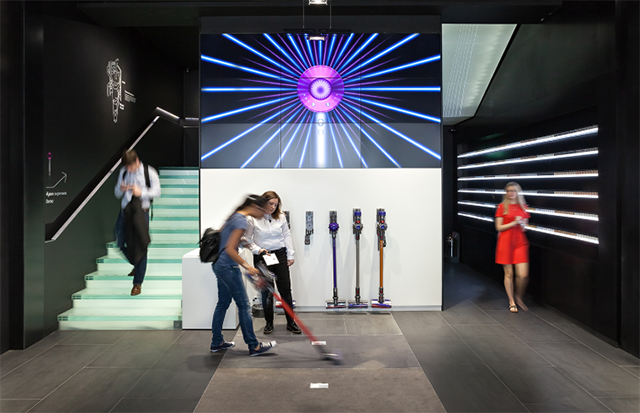 Ever since hitting the market, Dyson’s convention-defying technology has stirred curiosity among customers and left them mystified. (Anyone for a $399 hair dryer that looks like a raygun?) It’s no surprise then, the company is exploring innovative ways of getting its creations in front of customers. The brand is serious about investing in showrooms, this year unveiling a futuristic flagship on Fifth Avenue in NYC. Visitors can test Dyson’s entire range of vacuums, choosing from 64 different dirt and dust samples to vacuum off several varied floor types. Shoppers can also book an appointment with a stylist armed with one of those Supersonic hair dryers. It’s one of 25 similar locations opened globally in 2017 alone, each exhibiting its own unique sense of flair.
Ever since hitting the market, Dyson’s convention-defying technology has stirred curiosity among customers and left them mystified. (Anyone for a $399 hair dryer that looks like a raygun?) It’s no surprise then, the company is exploring innovative ways of getting its creations in front of customers. The brand is serious about investing in showrooms, this year unveiling a futuristic flagship on Fifth Avenue in NYC. Visitors can test Dyson’s entire range of vacuums, choosing from 64 different dirt and dust samples to vacuum off several varied floor types. Shoppers can also book an appointment with a stylist armed with one of those Supersonic hair dryers. It’s one of 25 similar locations opened globally in 2017 alone, each exhibiting its own unique sense of flair.
Indochino
 Made-to-measure menswear brand Indochino has enjoyed stellar growth since unveiling its first showroom in 2015. On the back of eight store openings in 2017, the once online-only custom suit retailer expects to build another 18 this year. Strategically situated near populations of young professionals, Indochino’s brick-and-mortar offerings revolve around providing luxury experience, at an affordable price. Collecting precise measurements from customers during scheduled appointment times, stylists help craft one-of-a-kind outfits, satisfying a growing demand for truly customized products. Indochino’s customer base swelled by 43% in just one year — a strong indication that demand for product customization is on the rise.
Made-to-measure menswear brand Indochino has enjoyed stellar growth since unveiling its first showroom in 2015. On the back of eight store openings in 2017, the once online-only custom suit retailer expects to build another 18 this year. Strategically situated near populations of young professionals, Indochino’s brick-and-mortar offerings revolve around providing luxury experience, at an affordable price. Collecting precise measurements from customers during scheduled appointment times, stylists help craft one-of-a-kind outfits, satisfying a growing demand for truly customized products. Indochino’s customer base swelled by 43% in just one year — a strong indication that demand for product customization is on the rise.
Bonobos
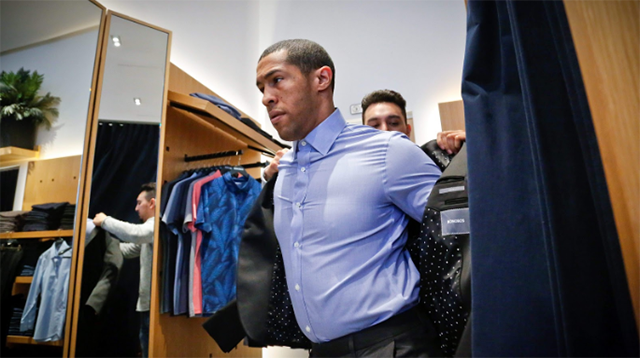 Arguably, the rise of the showroom format was built off the back of early pioneering efforts from Bonobos. Six years after revealing its first Guideshop, the menswear brand now has 48 locations under its belt, each pulling in roughly $2,400 per square foot. Thanks to the appointment-based nature of Bonobos’ model, fewer people in the store means sales assistants can give customers their undivided attention, with minimal distraction. Once items are fitted and chosen for purchase, payment is taken via a tablet, providing a convenient, seamless experience that resonates with the no-nonsense shopping habits of men. Walmart’s purchase of Bonobos last year signals the retail giant may harbor bigger plans for showroom concepts, hoping to leverage the smaller footprint and experiential appeal that showrooms provide.
Arguably, the rise of the showroom format was built off the back of early pioneering efforts from Bonobos. Six years after revealing its first Guideshop, the menswear brand now has 48 locations under its belt, each pulling in roughly $2,400 per square foot. Thanks to the appointment-based nature of Bonobos’ model, fewer people in the store means sales assistants can give customers their undivided attention, with minimal distraction. Once items are fitted and chosen for purchase, payment is taken via a tablet, providing a convenient, seamless experience that resonates with the no-nonsense shopping habits of men. Walmart’s purchase of Bonobos last year signals the retail giant may harbor bigger plans for showroom concepts, hoping to leverage the smaller footprint and experiential appeal that showrooms provide.
M. Gemi
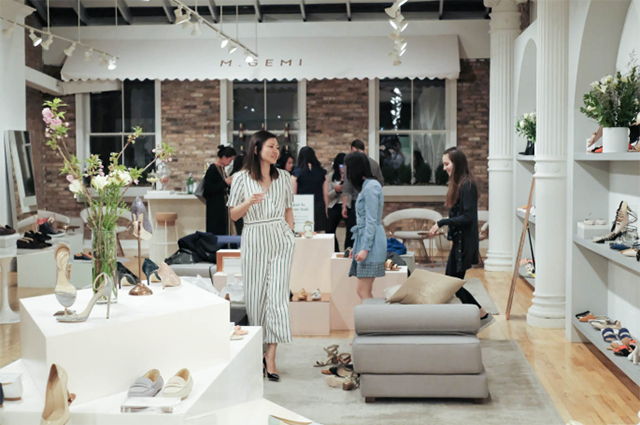 M.Gemi’s showroom approach is a textbook example of how the concept can be used to great advantage when a brand has an intimate understanding of its target audience. Embracing brick and mortar over the last two years, the footwear e-tailer has designed spaces geared to give guests a VIP experience. Customers are treated to free sweets and access to a bar while they wait around on comfortable lounges for their timeslot with a stylist. The label’s flagship in New York City also generates considerable buzz every Sunday, unveiling a new shoe design ahead of its official release online the next day. However, perhaps the biggest benefit of M.Gemi’s showroom strategy is the ability to collect invaluable data, which is then used to convert online sales and create brand evangelists.
M.Gemi’s showroom approach is a textbook example of how the concept can be used to great advantage when a brand has an intimate understanding of its target audience. Embracing brick and mortar over the last two years, the footwear e-tailer has designed spaces geared to give guests a VIP experience. Customers are treated to free sweets and access to a bar while they wait around on comfortable lounges for their timeslot with a stylist. The label’s flagship in New York City also generates considerable buzz every Sunday, unveiling a new shoe design ahead of its official release online the next day. However, perhaps the biggest benefit of M.Gemi’s showroom strategy is the ability to collect invaluable data, which is then used to convert online sales and create brand evangelists.
Boll & Branch
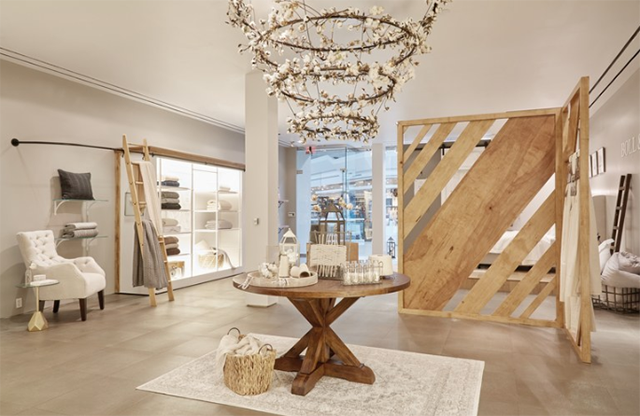 Boll & Branch has a vision of reinvigorating the consumer’s relationship with shopping malls, transforming them into experiential retail hubs. As customers wander through a Boll & Branch showroom, gaining inspiration from carefully curated bedroom setups, they’re invited to touch and feel an array of fabric samples and homewares. When they’re done, they can order in-store or later online, eliminating the need to carry heavy sets of sheets around for the rest of their day at the mall. The direct-to-consumer bedding brand has just one location in New Jersey so far, though plans to roll out another 20 over the next two years.
Boll & Branch has a vision of reinvigorating the consumer’s relationship with shopping malls, transforming them into experiential retail hubs. As customers wander through a Boll & Branch showroom, gaining inspiration from carefully curated bedroom setups, they’re invited to touch and feel an array of fabric samples and homewares. When they’re done, they can order in-store or later online, eliminating the need to carry heavy sets of sheets around for the rest of their day at the mall. The direct-to-consumer bedding brand has just one location in New Jersey so far, though plans to roll out another 20 over the next two years.
Nordstrom
 Nordstrom is a retailer unafraid of constant experimentation and reinvention. In 2018, the company has added a showroom to its brick-and-mortar portfolio, which it calls Nordstrom Local. With a particular focus on upscale service to match the neighborhood it’s nestled in, the Beverly Hills location is much smaller than the company’s regular offerings, coming in at just 3,000 square feet. When visiting, customers can get some personalized fashion tips from a stylist or access an on-site alteration service. While waiting to use spacious dressing rooms, shoppers can order a coffee or juice and lounge about on an array sofas and armchairs on offer.
Nordstrom is a retailer unafraid of constant experimentation and reinvention. In 2018, the company has added a showroom to its brick-and-mortar portfolio, which it calls Nordstrom Local. With a particular focus on upscale service to match the neighborhood it’s nestled in, the Beverly Hills location is much smaller than the company’s regular offerings, coming in at just 3,000 square feet. When visiting, customers can get some personalized fashion tips from a stylist or access an on-site alteration service. While waiting to use spacious dressing rooms, shoppers can order a coffee or juice and lounge about on an array sofas and armchairs on offer.
There’s no way of predicting how effective showrooms will prove in the long run. The format could be quickly drowned out amid a flood of widespread experimentation in experience. Allbirds, Sonos and b8ta are quick examples of novel store encounters that float to mind, not to mention efforts from larger legacy brands.
But for an incoming wave of tech-savvy shoppers accustomed to making purchases on a smartphone, showrooms might provide a welcome real-world distraction from their digital lives. Freeing customers from the pressure of having to buy something is likely the key to building brand evangelism and fueling a welcome wave of renewed interest in brick and mortar. After all, being able to provide physical demonstrations that elicit emotional connections to products will remain a vital component of any successful retail strategy. With showrooms, companies can provide an ideal mashup of convenience, experience and omnichannel harmony their customers have been crying out for.
Do you think showroom stores are here to stay? Comment below!

Posted by
Physical Retail Reimagined.
RetailSpaces is a community for store development and design innovators.
March 29-31, 2026 | San Antonio, TX
Learn More!
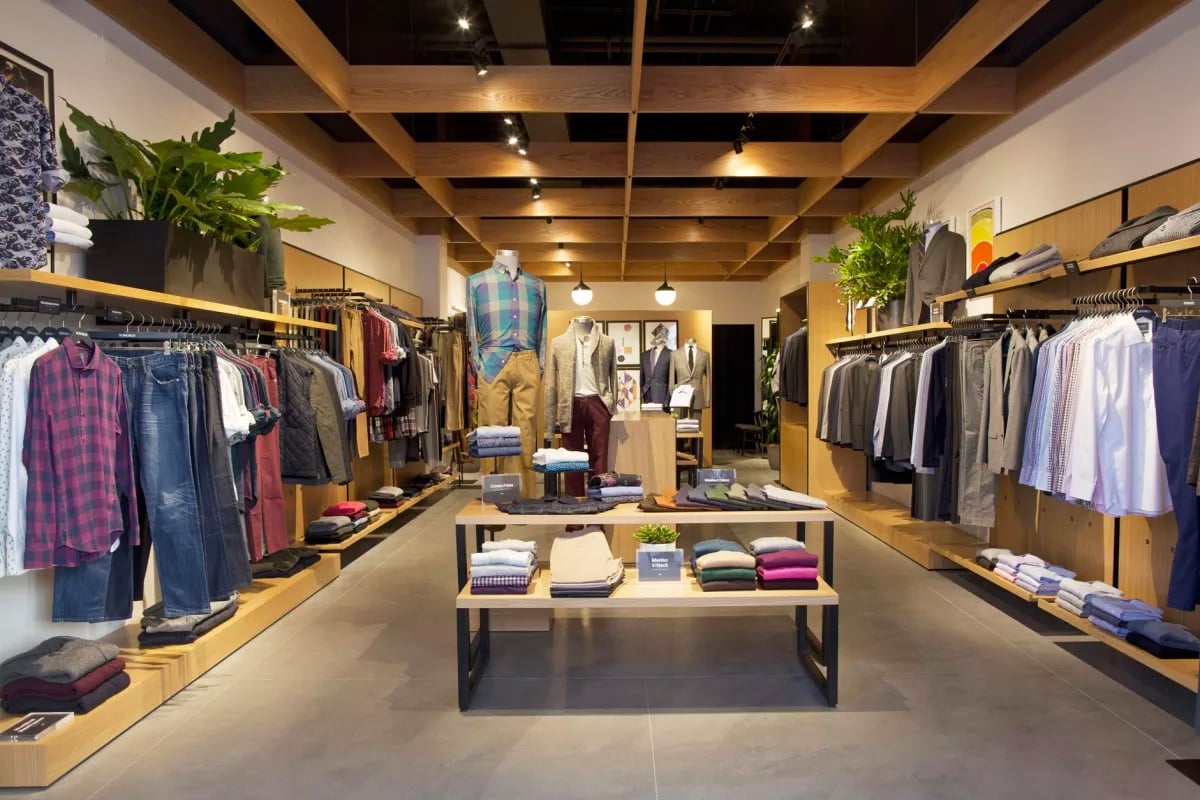





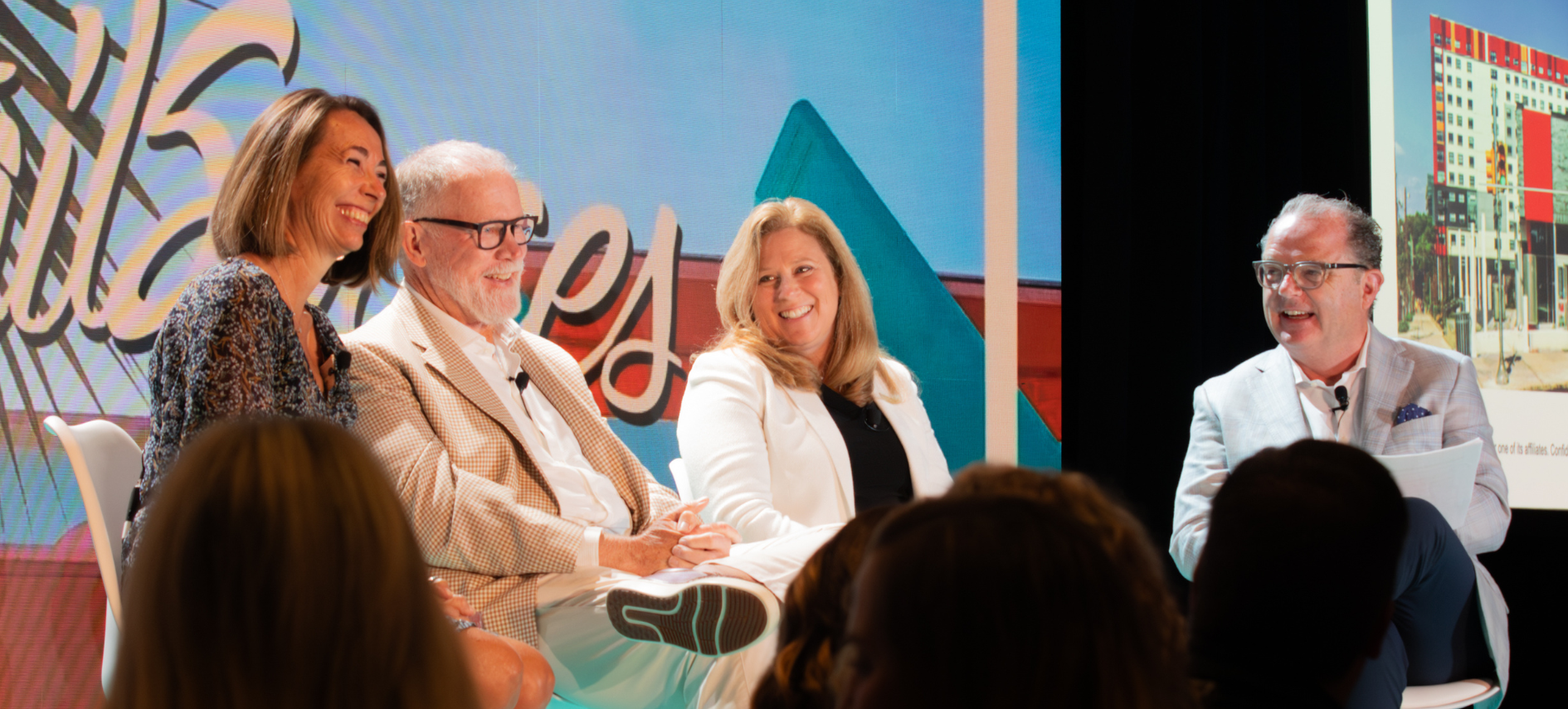

Comments